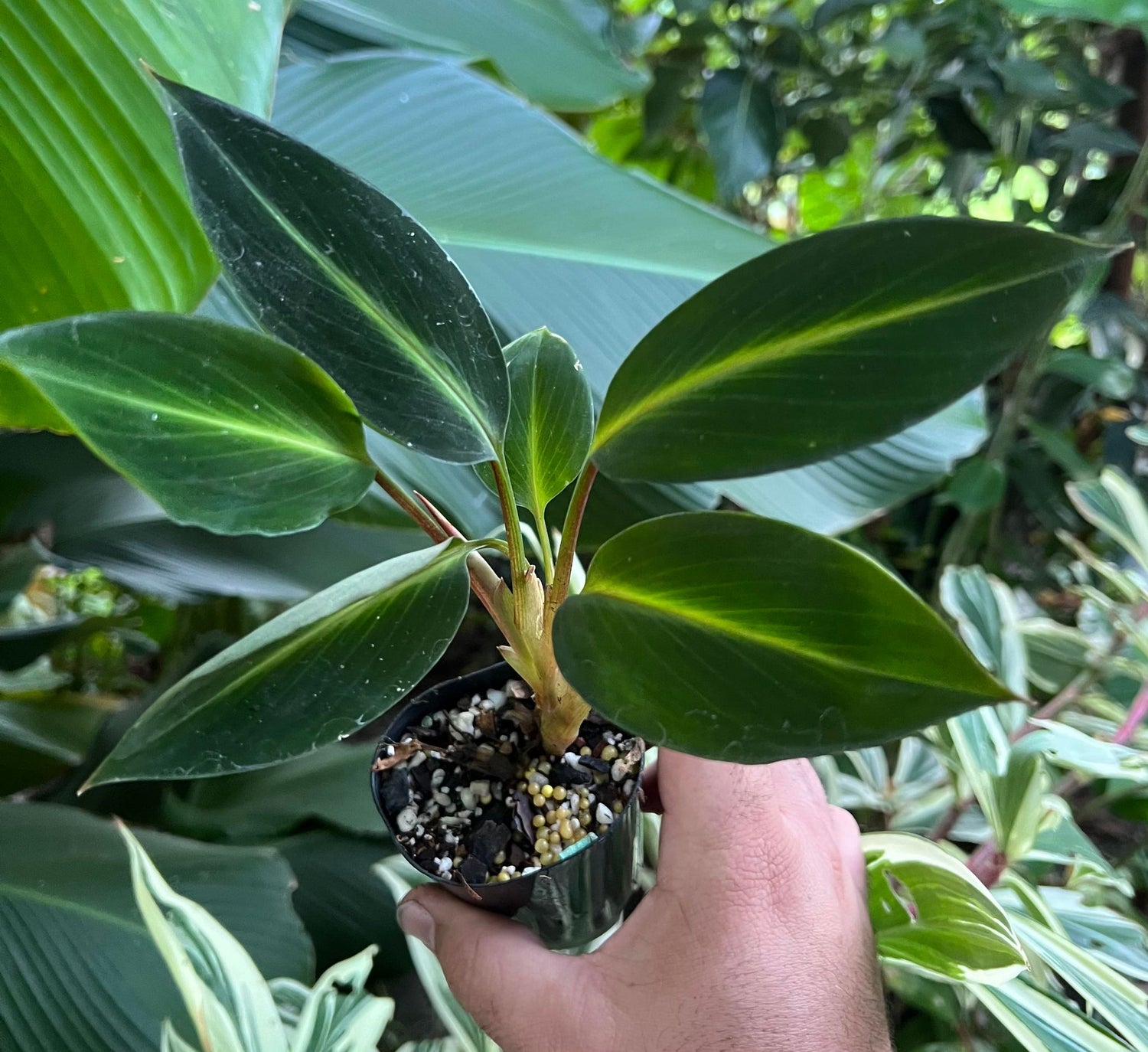Boesenbergia aurantiaca 75mm Pot
- Regular price
-
$25.00 - Regular price
-
- Sale price
-
$25.00
-
Hurry, only 1 item left in stock!
Couldn't load pickup availability
Shipping information


Product Details
Welcome to Plant&Leaf and our range of family grown plants. The first photo serves as a representative display, showcasing the beauty of a mature plant. The second photo provides a sample of a single plant from the current batch available. Please note the Pot size displayed on the heading of each product.
All of our plants are grown outdoors in nature and are exposed to the natural elements. Sometimes this means a leaf could have been chewed here and there or have a blemish or two – but we do our best to send the best plants we can on every order.
Boesenbergia, also known as fingerroot or Chinese keys is a lovely plant grown for its striking foliage. Here's how to keep Boesenbergia thriving indoors:
-
Light: Boesenbergia plants prefer bright, indirect light. Place them near a window where they can receive plenty of sunlight, but avoid direct sunlight, as it can scorch the leaves. If natural light is insufficient, you can supplement with artificial grow lights.
-
Temperature: Boesenbergia thrives in warm temperatures similar to its native tropical habitat. Aim to keep temperatures consistently between 18°C to 29°C.
-
Watering: Keep the soil consistently moist but not waterlogged. Water your Boesenbergia when the top few centimeters of soil feels dry to the touch. During the growing season, which is typically spring and summer, you may need to water more frequently. Reduce watering in the winter when growth slows down.
-
Humidity: Boesenbergia plants prefer moderate to high humidity levels. Increase humidity by misting the leaves regularly, placing a humidifier nearby, or grouping plants together to create a humid microclimate. This will help prevent leaf browning and promote healthy growth.
-
Soil: Use a well-draining potting mix rich in organic matter. A mix formulated for tropical plants or a blend of peat moss, perlite, and compost works well for Boesenbergia. Ensure the pot has drainage holes to prevent waterlogging.
-
Fertilization: Feed your Boesenbergia with a balanced, water-soluble fertilizer diluted to half strength every 4-6 weeks during the growing season. Avoid over-fertilizing, as it can lead to salt buildup in the soil and damage the plant.
-
Pruning: Remove any yellow, damaged, or dead leaves regularly to maintain the plant's appearance and health. Prune any leggy stems to encourage bushier growth.
-
Pest Control: Keep an eye out for common houseplant pests like spider mites, aphids, and mealybugs. If you notice any signs of infestation, treat the plant with insecticidal soap or neem oil.
By providing the right growing conditions, you can keep your Boesenbergia healthy and thriving indoors. Keep in mind that while Boesenbergia can be grown as a houseplant, its primary value lies in its edible rhizomes, which are often grown outdoors in tropical regions.





